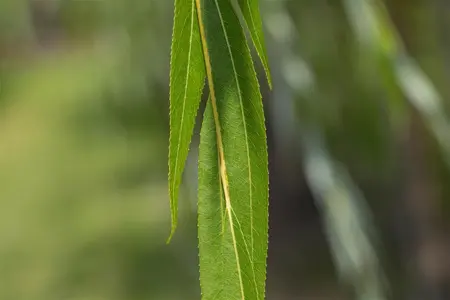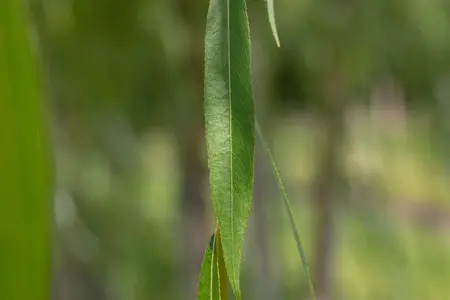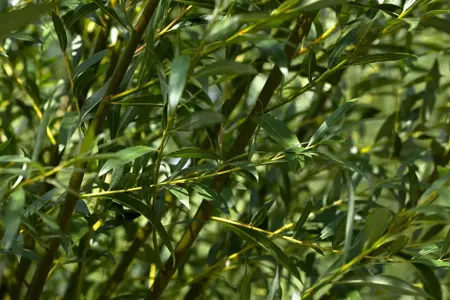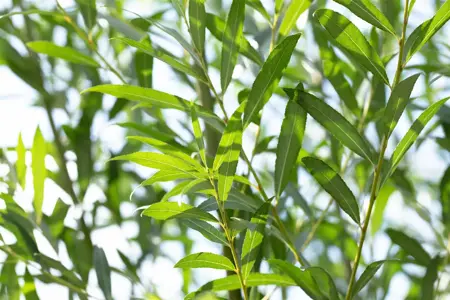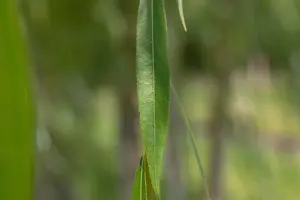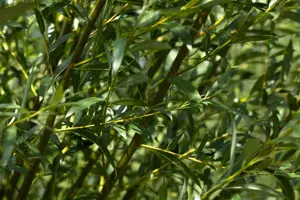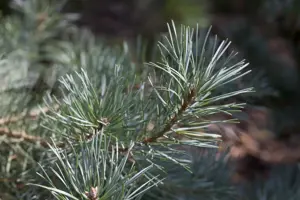Salix alba - 40-60 CM C2
Salix alba - 40-60 CM C2
Description
The White willow (Salix alba) is a spreading, broad tree that produces yellow flowers arranged in catkins. They appear from April to May. These produce white fruits. The White willow also has hairy, lanceolate, grey-green leaves. Its bark is grey and deeply fissured. In a sunny to semi-shady location with calcareous, nutrient-rich soil, it usually reaches a height of around 20 metres and grows to a width of around 15 metres.
Bulletpoints
* amber-yellow shoots
* tolerates pruning
* resistant to urban climates, wind-resistant, smoke-hardy, heat-loving, flood-tolerant, long-term flood-tolerant, can be built over
leaves
The deciduous leaves of the White willow are grey-green, lanceolate, hairy and alternate. They are about 8 - 10 cm tall.
Bark
Grey, deeply fissured bark makes this plant an eye-catcher in any garden.
Spread
Europe to Asia.
Frost hardiness
The White willow has good frost hardiness.
Growth
Spreading, broad.
Water
The plant needs plenty of water. Do not allow the soil to dry out.
Pruning
This plant is tolerant of pruning.
Location
Preferred location in a sunny to semi-shady position.
Soil
Normal soil.
Planting time
Container plants can be planted all year round, except when the soil is frozen and in summer heat (over 30°C).
Care
- A slow-release fertiliser can be used in spring. This releases the nutrients slowly and continuously so that the plant is evenly supplied over a longer period of time.
- Pruning wounds, saw cuts and broken branches should be treated with a wound sealant as soon as possible to prevent pathogens from entering the plant.
Flower
The yellow flowers of White willow appear in catkins from April to May.
Use
Solitary
Shoots
The shoots of Salix alba are amber yellow.
Root
Salix alba is a shallow-rooting plant and, depending on the soil, forms finely branched roots.

- Article number800
-
EAN codeSAALBA-2040060C2
- Latin nameSalix alba
- catalogLandscape shop

